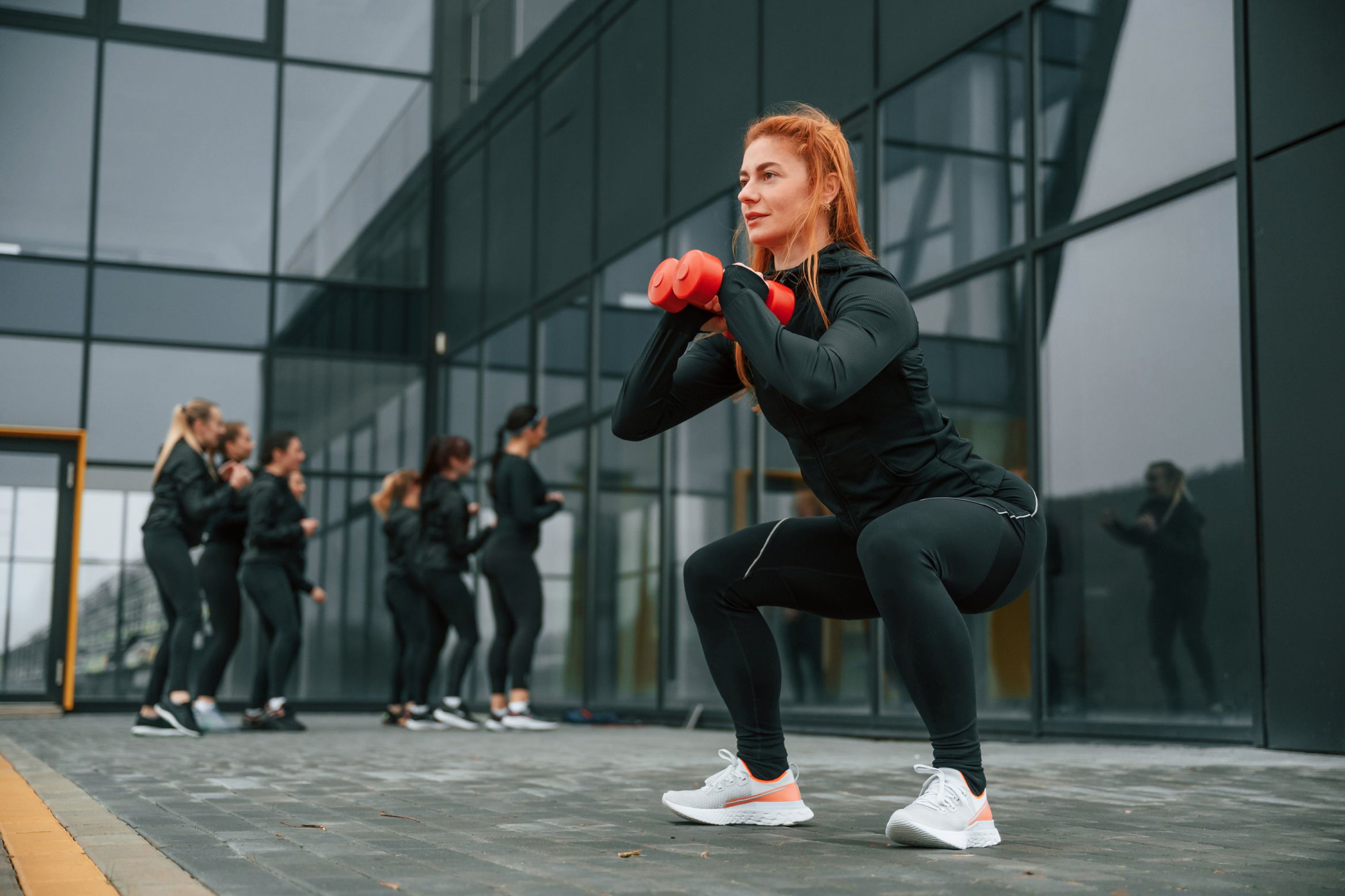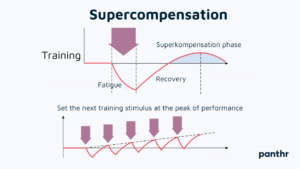
Anyone familiar with fitness training knows that specific stimuli are necessary to trigger desired effects in the body. However, constantly pushing or exceeding your limits does more harm than good. Understanding what happens in your body during training can help you avoid overtraining.
Overtraining and the Theory of Supercompensation
At first glance, it may seem paradoxical: to improve fitness and performance, you must systematically challenge yourself. Let’s explore the concept of supercompensation and its crucial role in preventing overtraining:
- Due to sufficiently intensive training, there’s a deliberate disturbance of your biological balance. Proteins play an essential role in this process.
- The body gets tired, and athletic performance decreases during training.
- Immediately after training, the organism starts the recovery phase. Our intelligent body prepares for the next workout by adapting.
- Bone density increases and new small blood vessels form, supplying the body with more blood and oxygen. New mitochondria are also created, providing more energy to cells.

The Importance of Recovery in Preventing Overtraining
Proper timing of training stimuli is crucial for optimal results:
- The next training stimulus should occur at the peak of these adaptation symptoms.
- This intelligent system only works if you give your body enough time to regenerate.
- If you strain yourself too early, you risk overtraining.
- If you wait too long, you’ll start all over again because the effect will not occur.
Understanding Regeneration Time
Knowing how long your body needs to recover after a workout is crucial for continuous performance improvement:
- Creatine phosphate, a high-speed energy supplier, reacts within a few minutes.
- Glycogen storage takes several hours to replenish.
- Muscle cells can take several days to recover, depending on the training intensity.
Recovery Times for Different Types of Training
Recovery time depends on your fitness level. While top athletes have shorter recovery periods due to years of training, here are general guidelines for most athletes and fitness enthusiasts:
- After an aerobic workout (moderate jogging, swimming, cycling, or inline skating), the body needs eight to twelve hours.
- The body needs 24 to 48 hours to recover after anaerobic training like interval training or HIIT.
- After intensive strength training, the body and especially the muscles need 48 to 72 hours.
Developing Body Awareness
As mentioned, recovery times are based on experience. With consistent, long-term training, you’ll learn to:
- Listen to your body’s signals.
- Estimate how long it will take to recover from a workout.
- Recognize when you’re ready for the next training session.
Remember, good coaches can also help estimate appropriate recovery times. By paying attention to these factors, you can optimize your training regimen and avoid the pitfalls of overtraining.
These symptoms can be associated with overtraining
Important to know: Not only do the sporting factors play a role in overtraining but also the psychological factors. These include high workloads, stress in a relationship, or other stressful events such as illness or the death of a loved one. The following symptoms are typical of overtraining:
- Persistent muscle soreness and fatigue that lasts longer than usual after workouts
- Decreased performance and inability to complete usual workouts or lift usual weights
- Elevated resting heart rate, especially in the morning
- Increased susceptibility to injuries, nagging pains, and slower recovery from injuries
- Mood changes like irritability, depression, or loss of motivation to train
- Sleep disturbances or insomnia
- Weakened immune system leading to frequent colds or infections
- Loss of appetite and unexplained weight loss
- Hormonal imbalances (e.g. decreased testosterone levels in men, irregular menstrual cycles in women)
- Plateaus or declines in strength gains despite continued training
How Panthr Keeps Your Workouts Balanced
panthr, the AI-driven personal trainer, is designed to help users avoid overtraining through several key features and strategies. By leveraging advanced algorithms and personalized data analysis, Panthr can effectively monitor and adjust training programs to prevent overexertion and promote optimal recovery.
panthr tracks various metrics such as workout intensity, frequency, and volume, allowing it to detect patterns that may lead to overtraining. The AI continuously analyzes user performance data, including strength levels, fatigue indicators, and recovery rates. If it detects signs of potential overtraining, such as decreased performance or prolonged muscle soreness, Panthr will automatically adjust the training program.
The app incorporates rest days and deload weeks into training schedules, ensuring users have adequate time for recovery. It also takes into account factors like sleep quality, stress levels, and nutrition, which play crucial roles in preventing overtraining. panthr can suggest modifications to workout intensity or volume based on these factors, helping users maintain a balanced approach to their fitness goals
Additionally, panthr educates users about the importance of recovery and the signs of overtraining. It provides personalized recommendations for recovery techniques, such as proper nutrition, hydration, and sleep habits. The AI can also suggest alternative low-intensity activities or mobility work on rest days to promote active recovery without overstraining the body.
By continuously learning from user data and adapting training programs accordingly, panthr helps users achieve their fitness goals while minimizing the risk of overtraining. This personalized, data-driven approach ensures that each user’s training regimen is optimized for their individual needs and recovery capabilities.
